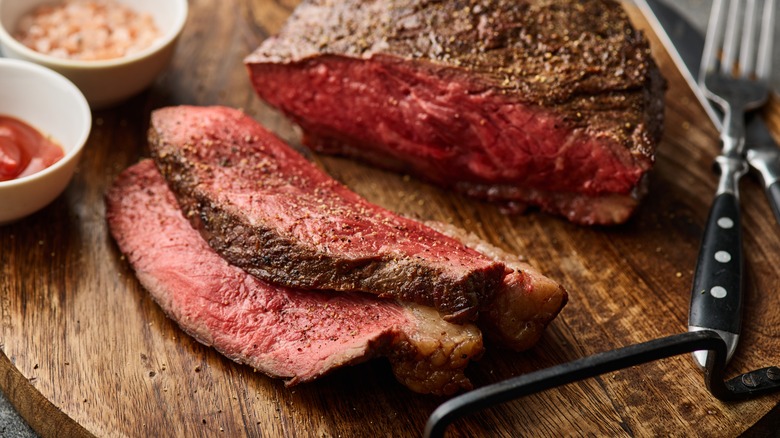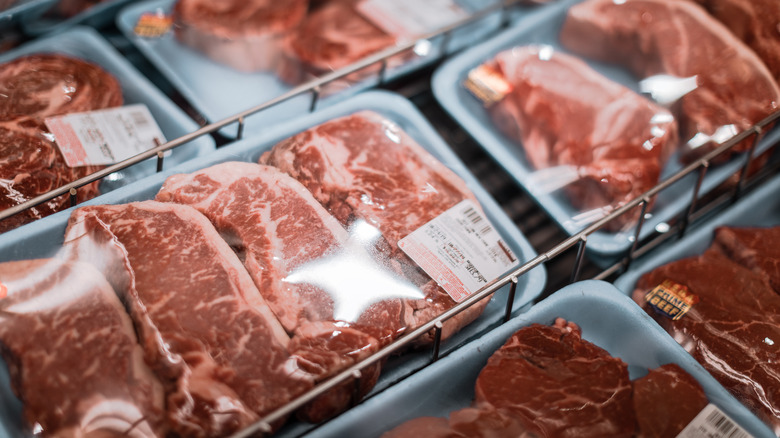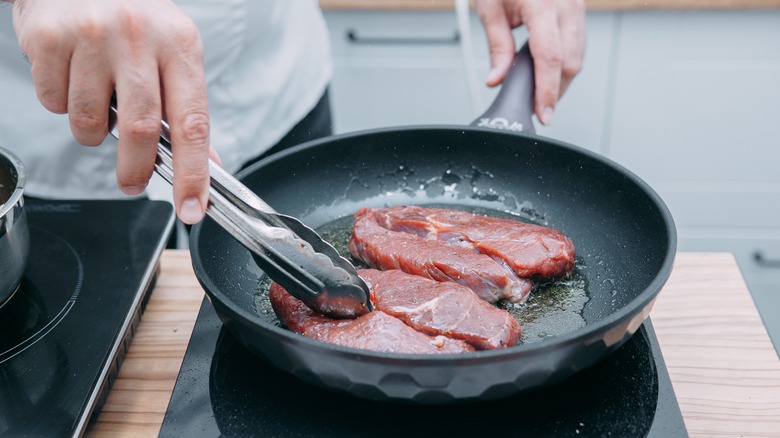The Mechanical Tenderization Process Behind Costco Steaks
Whether you're hosting a dinner party or just want an elevated night at home, making steak is a great way to indulge in a more upscale meal. But if you don't often cook steak, you may not be completely confident with the meat tenderization process.
Tenderizing meat is an important part of the cooking process, explains MasterClass, especially if the cut of meat is a little tougher than desired. Tenderization loosens the fibers of the meat, making it easier for each cut of meat to absorb marinades and seasonings.
There are a few different ways to tenderize meat at home, including pounding it with a meat mallet, using a rolling pin, or slow-cooking it. If you'd prefer to skip this step entirely, though, you may want to consider buying your steaks at Costco. The warehouse club uses a mechanical tenderization process on its steaks before they even hit the shelves.
Costco steaks already have some of the work done for you
If you purchase pre-cut rib-eye steaks from Costco, they generally come pre-tenderized, according to Insider. Costco uses a blade tenderizing process, which America's Test Kitchen states is when a machine uses small, sharp needles to puncture the tissue and muscle of the meat. (The puncture marks are nearly invisible unless you look closely and know they're there.)
Mechanically tenderized meat does come with some important cooking guidelines, so there's some divide over whether or not the convenience is worth it. As Eat This, Not That! explains, mechanically tenderized meat has specific temperature requirements to avoid foodborne illness. Still, many people enjoy the convenience of a ready-to-cook steak and don't mind cooking the meat a little longer.
The U.S. Department of Agriculture (USDA) states that the meat should be cooked to an internal temperature of at least 145 F, checked with a meat thermometer, and allowed to rest on the heat for at least three minutes before being removed from the cooking surface.
Make sure you cook the meat thoroughly
Mechanically tenderized meat is convenient, but there is a small risk associated with the process, explains America's Test Kitchen. Because the blades are reused over and over again, there's a chance that bacteria could be transferred between cuts of meat. Additionally, bacteria on the outside of the meat could be punctured through to the inside.
These bacteria could cause illness if not cooked off properly. To ensure the bacteria is fully cooked off, the meat should be heated thoroughly enough to make it well done — not ideal for people who prefer a rarer cook on their steak.
The USDA also requires organizations that mechanically tenderize meat to label packages so that consumers are aware of how to cook the meat safely. If you'd prefer to skip the risk altogether, Costco sells plenty of untenderized products in its meat department — just double-check the labels.


